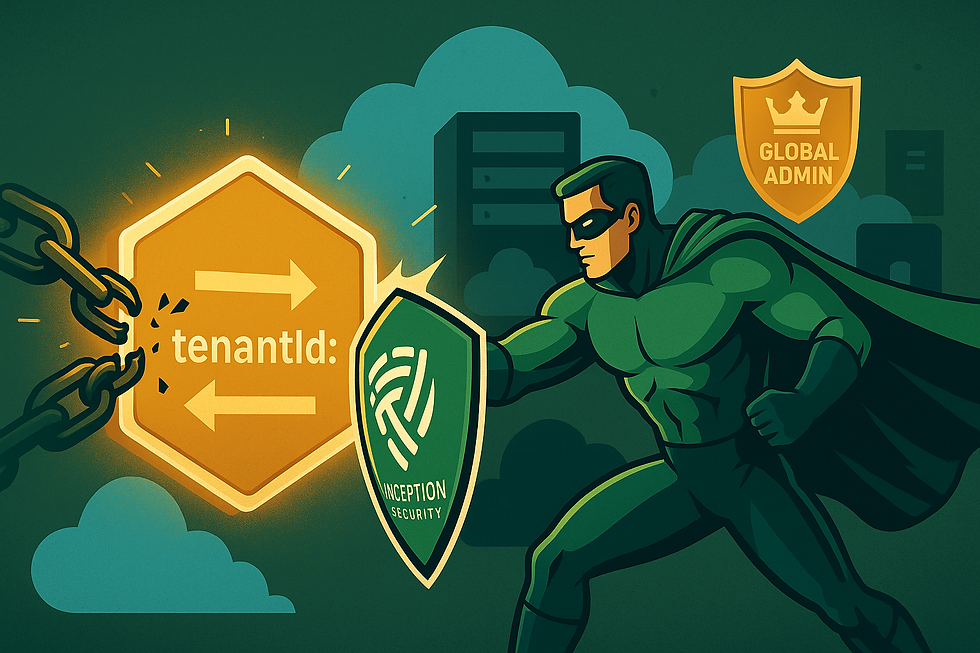Business Continuity and Disaster Recovery
- Inception Security

- May 12, 2022
- 4 min read
Business continuity and disaster recovery (BCDR or BC/DR) is a collection of processes and procedures that assist a company in recovering from a disaster and returning to normal business operations. It is a broad approach that encompasses both IT and commercial operations and tasks in the aftermath of a disaster. BCDR frequently integrates business operations and information technology to decrease catastrophic risks and support organizations in swiftly resuming normal operations following a disaster. A BCDR plan is typically included in a company's risk management strategy.
The BCDR is divided into two parts or stages.
Business Continuity BC: is in charge of the business operations component of BCDR. It comprises designing and putting in place rules and procedures to ensure that vital business activities and processes continue to operate during and after a disaster. In addition, BC includes staff replacement, service availability difficulties, business impact assessments, and change management.
Disaster Recovery (DR): The IT part of BCDR is called Disaster Recovery (DR). In the case of a natural or manufactured disaster, it details how a company's information technology department might recover. During this phase, actions such as server and network restoration, data backups, and how backup system configuration may be carried out.
Four Key Steps for Creating an Effective BCDR Plan
Risk Measurement and Analysis: Business executives should start by assessing their critical infrastructure and considering the potential threats they may face. It will be vital to investigate any potential problems thoroughly. This will enable your business to focus on recognizing and resolving issues before they become a problem or cause damage. Threat prioritization will be an essential aspect of your continuity planning effort. It will help you determine how much certain assets should be protected and which systems should be recovered first. If an IT system is classified as critical, it will require a faster reaction time than other infrastructure. The cost of the defect or disaster will be influenced by the speed with which these various systems respond.
Focus on Business Standards: This should go without saying, but with so many other aspects to consider during BCDR planning, it's easy for organizations to overlook it. Industry standards will create a robust framework for your strategy and increase your chances of passing an audit in the future. Aligning the BCDR strategy with this guideline aids compliance and provides a sound foundation for limiting the plan's scope. It is critical to obtain executive management approval for the plan and incorporate their comments into the continuity strategy. A lack of buy-in might prevent the planning process from ever beginning. Having these individuals on your side will also assist management in more successfully enforcing these practices throughout the organization. If there is a clear route for employees to follow, they will better understand their position in the business continuity strategy (BCDR).
Check, reassess, and reevaluate: Businesses must test their continuity plans regularly to ensure that they will serve their intended purpose. Tabletop exercises organized walk-throughs, and simulations may help leaders analyze specific crises. However, the testing team will need to add more members to identify information gaps.
Required Checkups and Plans: Businesses should make sure they have the necessary measures to keep operations running in the case of a crisis. For example, workers must be able to work remotely and access vital services if their physical workplace is unavailable. Businesses should also be given backup solutions to speed up recovery operations and restore assets as quickly as possible. These sorts of devices will aid in the mitigation of potential losses and the provision of services to clients throughout the recovery time.
Cyber-attacks are getting more sophisticated, devastating, and destructive and should constitute a significant source of concern for businesses. The use of security protocols combined with reboot-to-restore technology might be the key to avoiding similar disasters. These solutions ensure that any undesired apps downloaded the day before are deleted the next day, maintaining consistency in employee computer settings and preventing cyber attacks.
The efficacy of a BCDR approach is determined by how often it is evaluated. Without testing, organizations cannot legitimately claim to have a strategy in place. Infrastructure and threats are constantly evolving. As a result, testing BCDR plans should be done often. Today's BCDR systems frequently employ a quick recovery strategy, including performing regular image-based backups, copying server images to the cloud, and offline backups. Instant recovery technology has revolutionized disaster recovery testing by allowing clients to quickly spin up virtual computers (VMs) and evaluate their capacity to resume operations. The test might take place in a cloud-based environment or outside of IT, for example, by testing an emergency generator.
We are here to help!
Are you looking for ongoing advisory services to assist in identifying vulnerabilities and security policies that should be in place and help improve your security posture? The team at Inception Security™ has been leveraged to enhance the security posture of fortune 100 companies, small and medium-sized businesses. Our team has a depth of knowledge in the cybersecurity industry and will be able to provide value to your business right away.
Contact Inception Security if your company is looking for advisory services.









Comments